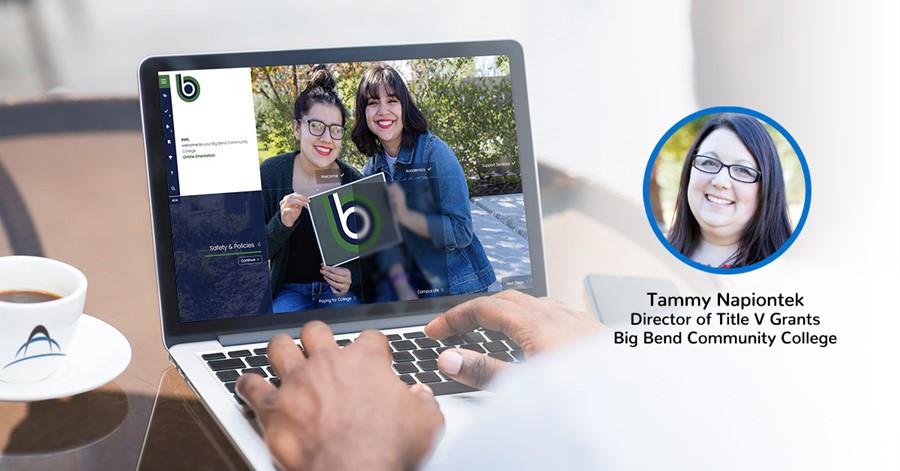
Learn how an online orientation system may qualify for federal funding for education.
Like most college and university orientation, transition, and retention practitioners, when it comes to the orientation experience, I tend to focus on students and their families. Online orientation has been at the center of our onboarding strategy for many years and it has paid for itself in more ways than one. Many OTR professionals see the benefit of online orientation and struggle to find funding, whether their budget for orientation is a line item or fee designation.
I had the opportunity to talk with Tammy Napiontek is Director of Title V Grants at Big Bend Community College. Big Bend is a Hispanic Serving Institution (HSI) with a full-time enrollment of 2,000, she first led her school’s efforts to apply for two Title V grants and one Title III grant. The grants included an initiative to redesign advising to eliminate barriers to access and success specifically for Latin students (42% of Big Bend’s population). One of the initiatives was to provide a better onboarding experience for students.
According to Tammy, online student orientation is great fit for federal funding. HSI’s (full-time enrollment of at least 25 percent Hispanic students) can submit grant proposals using Title V and Title III funds. TRIO grants are another federal funding source, renewable every five years.
Collaborate Across Campus
Tammy urges those interested in title grant money to go through proper institutional channels and processes. Support from administration is helpful, but it is critical the director of the grant write a funding request to the federal level program office. In this case, Tammy was the director of the grant. She advises those who seeking federal funding to “align efforts and find allies on campus.”
The request to the program office should include how much money is needed and identify the objectives to be met through the funding. Based on her previous grant-writing experience, Tammy recognized the opportunity to add the purchasing of online orientation software to her next proposal. Online orientation is a clear fit since, according to Tammy, “access and guided pathways” for onboarding new students is a key goal of dispersing federal grants to higher education institutions. The Department of Education website lists items it traditionally funds. Tammy said institutions need “good onboarding both to TRIO and to the Institution.”
Adaptable to Many Programs
Now using Advantage Orientation®, Tammy understands its versatility. “I initially envisioned using it primarily for recruitment, but I now see a ton of additional ways to use the product,” Tammy said. She sees the platform adaptable to transitional studies, “running start” student onboarding, and creating different tracks, including a TRIO-specific one, and building out additional modules. “As we continue to write grants, I always include financial literacy objectives,” Tammy said. Tammy imagines using Advantage Orientation® to create financial literacy modules.
Data. Data. Data.
Another key component of grants is data. According to Tammy everything in a grant ties back to an objective and data measuring is number one. Advantage Orientation® enables the collection and analysis of data from interactions such as usage, quizzes, and surveys. Tammy highlights another compelling aspect of Advantage Orientation® is the ability to make a Spanish-Language version of the online orientation. She used the built-in glossary function in Spanish, which “is super helpful for ESL students,” a target population for many community colleges. Tammy worked with her existing translation company to add video captions in Spanish.
Beat the Deadlines
Tammy’s newest grant is for $600,000 a year, but “it is a long game with funding,” she said. On average, writing a grant request proposal takes a team to produce a document up to 60 pages. “It’s all hands on deck for about 30 days,” she said. Once grants are announced, the turnaround is quick. Tammy’s advice is to “be ready and work on it ahead of time.” Then, wait. “It takes about six months to find out if a grant in awarded. Title III, Title V, and TRIO grants are highly competitive.”
- TRIO & Title III and IV grants are due in the Spring, usually March
- TRIO funding starts on September 1
- Title III & V funding starts on October 1

